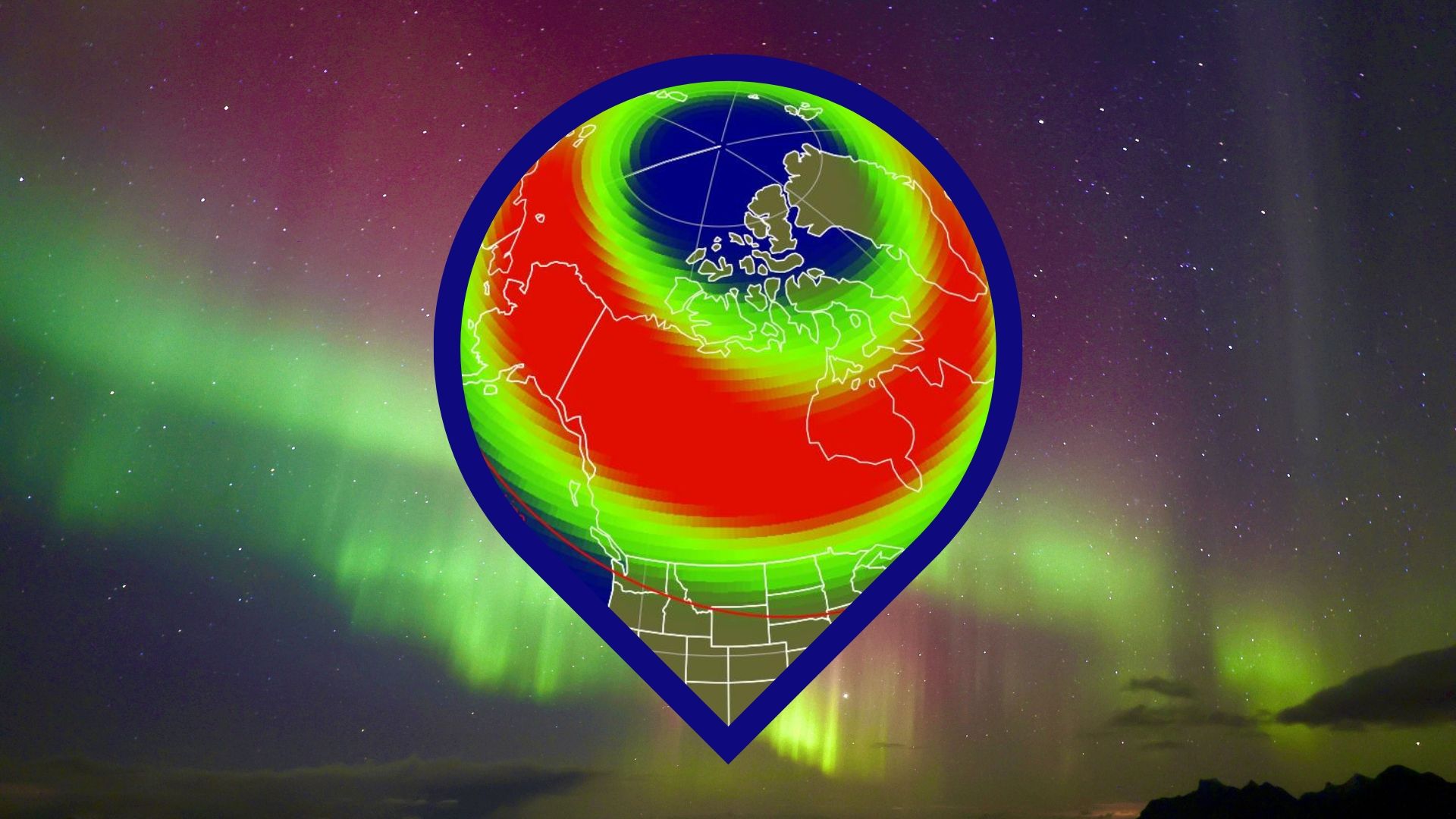Is it possible that over the past 4.5 billion years of the Earth’s history, alien civilizations visited the solar System and installed monitors in the “baby room” of its habitable zone to follow the evolution of terrestrial life? Such monitors could have appeared in the form of small technological devices that orbit the Earth as temporary secondary moons.
In December 1991, the first asteroid in an Earth-like orbit, 1991 VG, was discovered by the Spacewatch Project. Given its similar path to Earth, 1991 VG was considered a candidate interstellar probe (see discussion here). Since then, it became widely accepted that such objects are natural and constitute a secondary asteroid belt that occupies the region in which the Earth–Moon system orbits around the Sun, defining the Arjuna class of objects (as discussed here). The Arjunas with the most Earth-like orbits can experience temporary captures as mini-moons of Earth, trapped in dynamical resonances.
Quasi-satellites are different from mini-moons in that they are not gravitationally bound to Earth but just come close to it. Mini-moons are temporarily captured in a bound orbit around the Earth for a limited time. The list of currently known quasi-satellites of Earth includes 164207 Cardea (2004 GU9), 469219 Kamo‘oalewa (2016 HO3), 277810 (2006 FV35), 2013 LX28, 2014 OL339, and 2023 FW13.
On August 2, 2025, a new quasi-satellite of Earth was discovered by Carlos and Raúl de la Fuente Marcos (as reported here). This quasi-satellite was widely described by news media as a candidate for Earth’s “second moon”. Designated 2025 PN7, this “Arjuna” object has, by definition of a quasi-satellite, an orbital period close to 1 year, although a significantly non-zero eccentricity around the Sun of ∼ 0.1075, resulting in its extended presence close to Earth.
In fact, the designation of 2025 PN7 as a quasi-satellite is temporary and it has only held this status since the 1960s, a period well known for major advances by both the Soviet and US space programs, particularly in exploring our Moon and the planets Venus and Mars. This naturally leads to the question: “is 2025 PN7 of terrestrial technological origin?” — in other words, is it a relic of an interplanetary mission by humanity from the 1960s? A few days ago, I asked my brilliant colleague Adam Hibberd this question. The answer took the form of a new paper that we just submitted for publication (accessible here).
To generate the interplanetary mission trajectories from the 1960s to the current time, we used the Earth departure and planetary arrival times provided to ’Optimum Interplanetary Trajectory Software’ (OITS), developed by Adam. For every mission, the transfer orbit followed by the spacecraft could be generated and compared against the trajectory of 2025 PN7, in order to ascertain whether this object could be associated with the mission in question. Having derived the mission candidates, Adam and I investigated their trajectories.
The top left panel of the above set of figures reveals 2025 PN7’s mean separation from Earth, using a 20-year simple moving average, indicating that its placement as a quasi-satellite of Earth was around the time of the Zond 1 mission launch by the Soviet Union on April 2, 1964.
Comparison of the heliocentric longitude of 2025 PN7 at the arrival dates of 26 Venus missions with the longitudes of the corresponding missions at these times reveals a low discrepancy in the Zond 1 mission to Venus (top right panel), and also a similar, though slightly larger deviation for the Venera 8 mission.
Examination of the displacement of the asteroid from the Zond 1 probe for the duration of its flight (lower left panel), implies a low, yet unconvincing deviation with a minimum value of about 8% of the Earth-Sun separation (defined as `astronomical unit’ and abbreviated as `au’) around May of 1964. However, comparison of the heliocentric longitudes of the two objects reveal they follow an almost identical evolution for the entire flight of Zond 1 (lower right panel).
One problem with identifying 2025 PN7 as the Zond 1 probe is that the object’s closest approach to Earth is about 0.2 au, well shy of the required 0.72 au heliocentric distance. Could this instead be the Blok-L upper stage of the Zond 1 mission? Indeed, could the Blok-L have fallen short of Venus, in the way 2025 PN7 did?
The Zond 1 mission was a failure due to technological complications. Our dynamical calculations show that the Blok-L for the Zond 1 mission may have failed to deliver the required velocity boost ∆V, since after the Blok-L burn Zond 1 needed to conduct an additional burn (possibly to correct for a shortfall) on April 3, 1964. It is questionable whether the Zond 1 probe could have sufficiently corrected for such a ∆V deficit.
Calculation of the Blok-L’s brightness, based on a highly reflective albedo, gives approximately the observed value assuming a dimension of 3.2 meters. Comparing the inclination of 2025 PN7 around the time of Zond 1 launch with that of the spacecraft, we find 2.44 and 3.42 degrees respectively, not that different.
In conclusion, it is possible that 2025 PN7 is the Blok-L upper stage of the failed Russian Zond 1 mission to Venus, though this should be verified by spectroscopic analysis of the object. A measurement of the spectrum of 2025 PN7 could potentially reveal its surface composition and test whether its origin is technological. This was the method used to identify the space object 2020 SO discovered by the Pan-STARRS telescope in Hawaii on September 17, 2020 as the Centaur upper stage of the Surveyor 2 mission to the Moon launched by NASA on September 20, 1966. Pan-STARRS observations showed that the hollow object 2020 SO exhibited non-gravitational acceleration as it was pushed by sunlight. Spectroscopic observations by NASA’s Infrared Telescope Facility in December 2020 (as reported here) revealed that the surface spectrum is similar to that of stainless steel, confirming the technological origin of 2020 SO.
On October 19, 2017, the same Pan-STARRS telescope spotted an interstellar visitor, 1I/`Oumuamua, which also exhibited an excess push away from the Sun without any signs of cometary gas or dust around it. We know that the interstellar object 1I/`Oumuamua definitely originated outside the Solar system because it is not gravitationally bound to the Sun and moved differently than all of humanity’s space missions. If 1I/`Oumuamua was also pushed by reflecting sunlight, as I suggested in a peer-reviewed paper from 2018 (accessible here), the question is who manufactured this interstellar object?
The fact that two out of three interstellar visitors so far, 1I/`Oumuamua and 3I/ATLAS, appear anomalous, has broader implications to humanity. These were echoed in a message that I received today:
“Dear Professor Loeb,
Allow me to introduce myself: I am Jakob Viñas, orchestra conductor and cellist. Although my professional field is in the arts, I have always felt a profound fascination for astronomy, mathematics, and philosophy.
Like millions of people around the world, I am enthusiastic about and deeply inspired by your open and disruptive mindset, qualities that have made you a prominent figure in the scientific community, with an extraordinarily broad vision.
Regarding the latest interstellar visitor, I would like to share with you a brief personal meditation. I believe it would not be strictly necessary for an advanced civilization to resort to large spaceships to explore or interact with other stellar systems. It would suffice to use comets or asteroids as vehicles or projectiles. In fact, even we, with our current limited capabilities, could probably do so through the use of atomic bombs, guidance systems, and emerging artificial intelligence technologies.
However, and regrettably, humanity — or rather, the divided and constantly confrontational group of human beings — seems destined to perpetuate internal conflicts, as it has done for the last 5,000 years (and surely long before), instead of focusing its efforts toward common objectives such as preparing a true planetary defense.
The case of 3I/ATLAS is a reminder of our vulnerability. Although it is expected to pass about 270 million kilometers from Earth, which in astronomical terms could be considered “grazing our ear,” it remains a warning. If an object of this type had hostile intentions and performed an Oberth maneuver at the right moment, we would not be prepared to respond.
Although the probability of a catastrophic impact is low, it is not zero. Perhaps the interplanetary comet that will end our civilization is already on its way, while we continue to focus on our conflicts and the accumulation of weaponry — with thousands of atomic bombs and more than a hundred armies engaged in an “all against all.”
I firmly believe that, if there is no profound change in our way of thinking and organizing ourselves as a species, our chances of survival are slim. However, I hold hope that the solution may be found in a concept I like to call “scientific humanism,” a synthesis of reason, knowledge, and global cooperation that would allow us to face existential challenges with true unity.
Professor Loeb, I thank you again for your time and your tireless work. Your work not only inspires, but offers a hopeful vision of what humanity could become if it sets its mind to it.
Warm and cordial regards,
Jakob Viñas
Orchestra Conductor, Cellist and author”
ABOUT THE AUTHOR
Avi Loeb is the head of the Galileo Project, founding director of Harvard University’s Black Hole Initiative, director of the Institute for Theory and Computation at the Harvard-Smithsonian Center for Astrophysics, and the former chair of the astronomy department at Harvard University (2011–2020). He is a former member of the President’s Council of Advisors on Science and Technology and a former chair of the Board on Physics and Astronomy of the National Academies. He is the bestselling author of “Extraterrestrial: The First Sign of Intelligent Life Beyond Earth” and a co-author of the textbook “Life in the Cosmos”, both published in 2021. The paperback edition of his new book, titled “Interstellar”, was published in August 2024.
Source link


